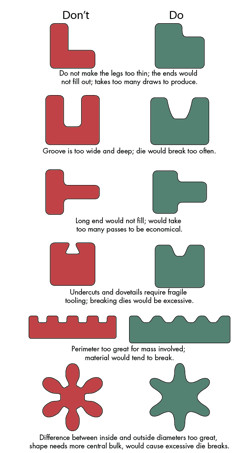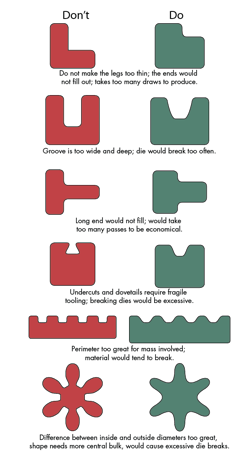Tips for Making Shapes Out of Cold-Drawn Steel
Special-section steel bars are hot-rolled bars that have been cold-drawn to a designer’s or manufacturer’s specifications. Usually they are given the cross-section and size of a part they will be used to make. They are made like standard shapes (rounds, squares, hexagons, and flats), except the die is shaped to precut the required cross-section.
Shapes range from simple squares with rounded corners to complex, nonsymmetrical shapes. Simpler cross-sections are formed in a single draw; more complicated ones usually require three or more progressive dies, each further refining the shape. Between passes, the bar is often thermally treated and cleaned.
Cold drawing is the least expensive cold-finishing process, but it provides several advantages besides turning out near-net-shape parts. For example, cold-drawn parts have smooth, scale-free finishes, close dimensional accuracies, and twice the straightness of a hot-rolled bar. Cold drawing also hardens and strengthens the metal.
The most commonly used steels to be used in cold drawing are AISI 1018 and 1045. High-carbon grades are seldom used because they are difficult to draw and require long annealing cycles between drawing passes.
For parts that need considerable machining, the 1100 and 1200 series of free-machining grades are recommended. In alloys, AISI 8620, a nickel-chrome-molybdenum steel is usually chosen when case-hardening is to be done. When the part is going to be through-hardened, AISI 4140, a chromium-molybdenum steel, is often selected.
Cold-drawn parts are often used in autos and trucks, heavy machinery, farm and off-road vehicle, and firearms.
Like all metal-working processes, cold drawing has some limitations. For example, it cannot be used to make tapers, undercuts, or deep grooves. Ideally, parts should have a central bulk rather than some extensions or excessive peripheral areas. Here are some examples of the shapes to avoid:

